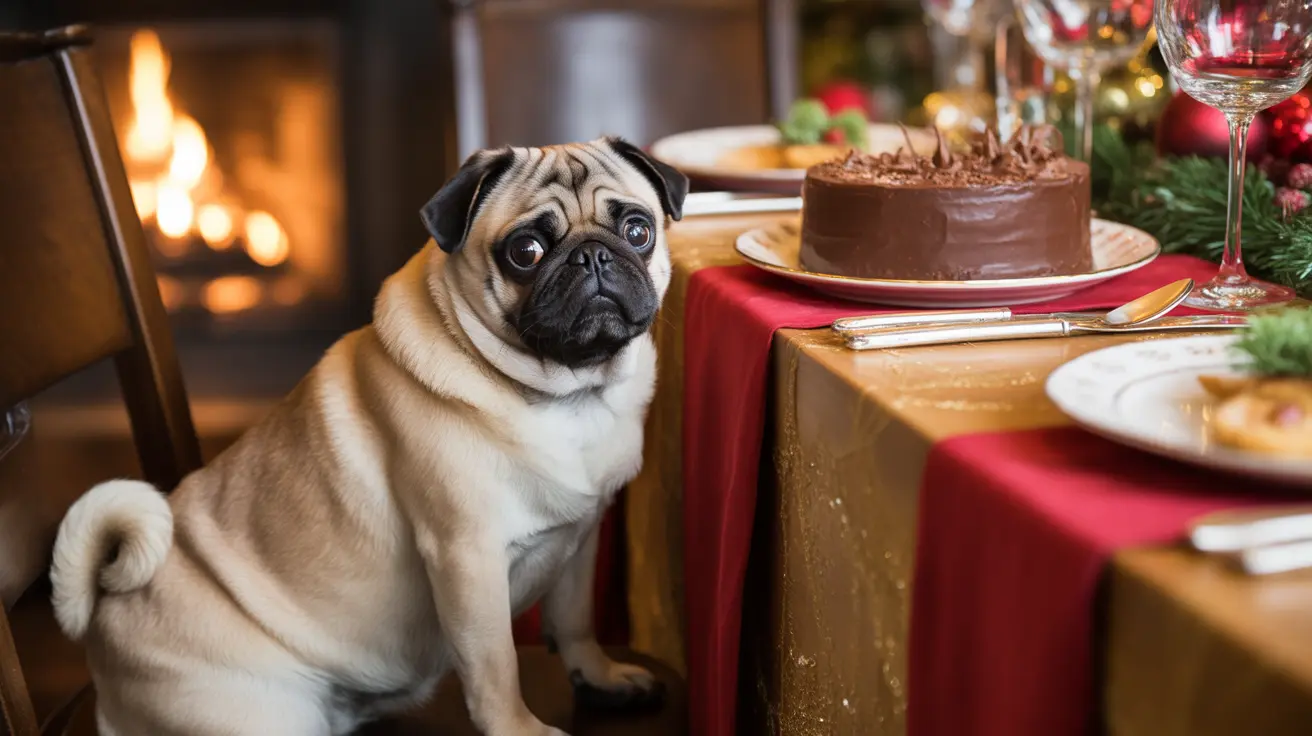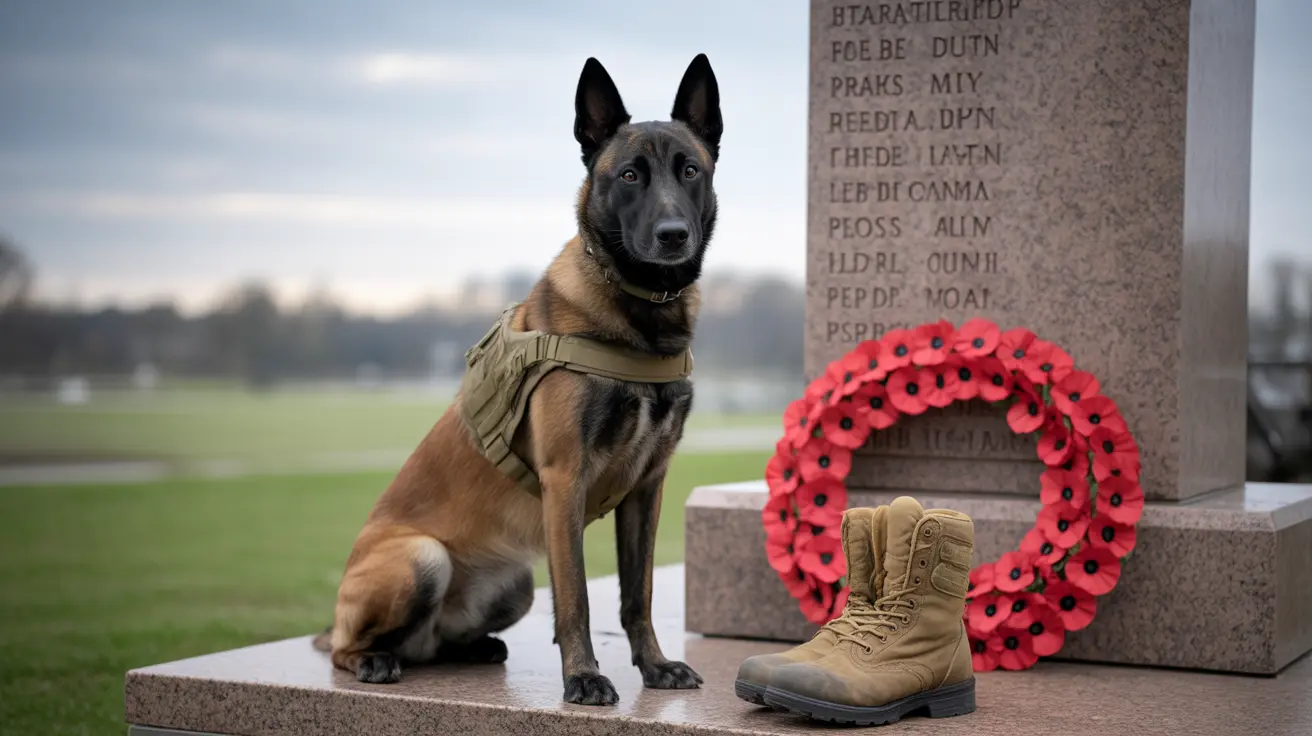The Hidden Dangers of Feeding Christmas Food to Dogs: Essential Safety Guide for Pet Parents
Christmas is the most wonderful time of the year for families, but it can quickly turn into a nightmare for pet owners when beloved dogs accidentally consume toxic holiday foods. Statistics reveal that dogs are 75 percent more likely to be treated by veterinarians for food poisoning in December compared to other months of the year. This alarming increase directly correlates with the abundance of festive foods that pose serious health risks to our four-legged family members.
Understanding the dangers of feeding Christmas food to dogs is crucial for every pet owner who wants to ensure their furry companions remain safe and healthy throughout the holiday season. From chocolate-laden desserts to savory dishes packed with harmful ingredients, traditional Christmas fare contains numerous substances that can cause everything from mild digestive upset to life-threatening organ failure in dogs. This comprehensive guide will help you identify dangerous foods, recognize warning signs of poisoning, and create a pet-safe holiday environment for your canine companions.
Common Christmas Foods That Are Toxic to Dogs
The festive season brings an abundance of delicious foods that seem perfect for sharing, but many traditional Christmas dishes contain ingredients that are extremely dangerous for dogs. Chocolate stands as one of the most well-known culprits, containing theobromine and caffeine that dogs cannot process effectively. During Christmas, chocolate appears everywhere – from advent calendars and chocolate coins hanging on trees to wrapped presents under the Christmas tree. Even small amounts can cause chocolate poisoning, leading to vomiting, lethargy, loss of appetite, and difficulty defecating.
Christmas cakes, puddings, and mince pies present another significant threat due to their high concentration of raisins, currants, and sultanas. These dried fruits are particularly toxic in their concentrated form and can cause kidney failure in dogs. The danger is compounded because symptoms may be delayed, making pet owners believe their dog is fine when serious internal damage is actually occurring.
Traditional sage and onion stuffing, gravies, and roasted dishes often contain members of the allium family – onions, garlic, leeks, shallots, and chives. These vegetables contain compounds that systematically damage red blood cells, leading to anemia. The effects can be cumulative, meaning even small amounts consumed over time can build up to dangerous levels in a dog's system.
Specific Toxic Ingredients in Holiday Foods
Macadamia nuts, often found in holiday baked goods and fancy nut mixes, are particularly poisonous to dogs. These nuts can cause weakness, tremors, vomiting, and dangerous increases in body temperature. Unlike some other toxic foods where the amount matters, even small quantities of macadamia nuts can trigger severe reactions in sensitive dogs.
Blue cheese and other moldy foods present unique dangers through roquefortine C, a compound produced by fungi that causes muscle tremors and seizures. During holiday parties, cheese platters often include blue cheese varieties that can be accidentally dropped or deliberately shared with pets, creating serious health risks.
Alcohol represents an immediate emergency for dogs, as even small amounts can cause drowsiness, loss of coordination, dangerously low body temperature, seizures, and coma. Holiday punch bowls, wine glasses left within reach, or alcohol-soaked desserts can quickly lead to alcohol poisoning in dogs, with smaller breeds being particularly vulnerable.
Dangerous Holiday Meal Components
Cooked bones from Christmas roasts pose significant mechanical dangers beyond toxicity concerns. Unlike raw bones, cooked bones become brittle and prone to splintering, which can cause intestinal blockage, irritation, or perforation requiring emergency surgery. Bones from chicken, turkey, or goose carcasses are particularly hazardous and should be disposed of immediately in secure containers that dogs cannot access.
Rich, fatty foods commonly served during Christmas dinners can trigger pancreatitis, a serious and painful inflammation of the pancreas. Fatty turkey trimmings, rich gravies, and buttery side dishes that seem like special treats can actually cause severe digestive distress, vomiting, and diarrhea. This condition often requires hospitalization and can have long-lasting effects on a dog's digestive system.
Xylitol, an artificial sweetener found in sugar-free candies, gum, and some baked goods, causes rapid insulin release in dogs, leading to potentially fatal hypoglycemia. Holiday sugar-free treats intended for diabetic family members can be particularly dangerous if left where curious dogs can reach them.
Warning Signs and Symptoms of Food Poisoning in Dogs
Recognizing the signs of food poisoning in dogs requires immediate attention to behavioral and physical changes. Vomiting and diarrhea are often the first visible symptoms, but they can progress rapidly to more serious conditions. Pet owners should watch for rapid heartbeat, difficulty breathing, excessive drooling, or changes in gum color, which can indicate circulatory problems.
Neurological symptoms present some of the most alarming signs of severe poisoning. Staggering, loss of coordination, seizures, or unusual behavioral changes like excessive lethargy or hyperactivity all warrant immediate veterinary attention. These symptoms can indicate that toxins are affecting the nervous system, requiring emergency intervention.
Digestive symptoms may include abdominal pain, evidenced by a hunched posture, reluctance to move, or sensitivity when the stomach area is touched. Dogs may also exhibit weakness, pale gums, rapid breathing, or increased thirst and urination, particularly in cases involving kidney damage from grapes or raisins.
Pet-Safe Holiday Food Alternatives
Creating a pet-friendly Christmas doesn't mean dogs have to miss out entirely on special holiday treats. Several festive foods are safe for dogs when prepared properly and given in moderation. Plain turkey meat without skin or bones makes an excellent protein treat, as do salmon fillets cooked in water without seasoning.
Vegetables commonly served at Christmas dinner can be safely shared with dogs when prepared without butter, salt, or seasonings. Green beans, Brussels sprouts, parsnips, carrots, peas, swede, and sweet potatoes all provide healthy nutrients. Mashed potatoes prepared without butter or milk can be offered in small portions, along with cooked pumpkin puree, which many dogs find delicious.
Fresh apples, with seeds and cores removed, make excellent healthy treats that many dogs enjoy. These can be sliced and served as special holiday snacks, providing fiber and vitamins without the risks associated with processed holiday desserts.
Managing Pets During Holiday Gatherings
Holiday parties and family gatherings create additional challenges for pet safety, as increased activity and unfamiliar guests can lead to accidental food sharing or unsupervised access to dangerous items. Establishing clear boundaries and communication with guests is essential for maintaining pet safety throughout the festivities.
Create a designated safe space for your dog with familiar toys, food, and water where they can retreat when feeling overwhelmed by holiday activities. Maintaining regular feeding schedules and routines helps reduce stress and prevents dogs from seeking alternative food sources from party platters or dinner tables.
Guest education plays a crucial role in preventing accidental poisoning. Inform visitors about your pet's dietary restrictions and ask them to avoid sharing table scraps or leaving food within reach. Many well-meaning guests don't realize the dangers of feeding dogs human food and appreciate guidance on how to interact safely with pets during holiday celebrations.
Emergency Preparedness and First Aid
Preparation for potential emergencies should begin before holiday celebrations start. Research and note the contact information for nearby emergency veterinary services, as regular veterinary offices may have limited hours during holidays. Having this information readily available can save precious time in emergency situations.
If you suspect your dog has ingested toxic food, contact your veterinarian immediately and provide as much detailed information as possible about the substance consumed and the estimated quantity. Never attempt to induce vomiting without professional veterinary guidance, as some substances can cause additional damage when brought back up through the esophagus.
Keep activated charcoal and hydrogen peroxide on hand only for use under direct veterinary supervision. These substances can be helpful in certain poisoning situations but can also cause harm if used inappropriately or for the wrong type of ingestion.
Environmental Holiday Hazards Beyond Food
Christmas decorations and plants present additional risks that extend beyond food-related dangers. Christmas plants such as poinsettia, holly, mistletoe, and ivy contain compounds toxic to dogs and should be positioned well out of reach. Pine needles from real Christmas trees can cause irritation or intestinal blockage if consumed in large quantities.
Holiday decorations including tinsel, baubles, and fairy lights pose choking hazards and can cause intestinal blockage if swallowed. Electrical cords should be kept tidy and unplugged when not in use to prevent electrocution risks. Potpourri and scented candles may contain essential oils that are harmful to dogs when ingested or inhaled in large quantities.
Creating Pet-Friendly Holiday Traditions
Establishing pet-safe holiday traditions ensures that dogs remain included in family celebrations without compromising their health and safety. Consider preparing special homemade dog treats using pet-safe ingredients like pumpkin, sweet potato, and plain cooked meats. These can be shaped into festive forms and served as special holiday rewards.
Involve children in creating pet-safe celebration rituals, teaching them about responsible pet ownership while building positive holiday memories. This education helps create lifelong habits of pet safety and consideration that extend well beyond the holiday season.
Frequently Asked Questions
How quickly do symptoms appear if my dog eats toxic Christmas food?
Symptoms can appear anywhere from 30 minutes to several hours after ingestion, depending on the toxic substance. Chocolate poisoning symptoms typically appear within 6-12 hours, while grape or raisin toxicity may not show symptoms for 24-48 hours. Some toxins like xylitol can cause symptoms within 30 minutes, making immediate veterinary contact crucial regardless of when symptoms appear.
What should I do immediately if my dog eats chocolate during Christmas?
Contact your veterinarian immediately and try to determine the type and amount of chocolate consumed. Do not induce vomiting without professional guidance. Provide your vet with your dog's weight, the type of chocolate (dark, milk, white), and the estimated amount eaten. Keep the chocolate packaging if available, as this helps veterinarians calculate toxicity levels.
Are there any Christmas foods that are completely safe for dogs?
Yes, several Christmas foods are safe for dogs when prepared without seasoning, butter, or other additives. Plain turkey meat (without bones or skin), cooked carrots, green beans, sweet potatoes, and fresh apple slices (without seeds) can be safely shared in moderation. Always introduce new foods gradually and in small portions.
How can I prevent my dog from getting into dangerous foods during holiday parties?
Create a safe space away from party areas, inform guests about not sharing food, secure trash cans with tight-fitting lids, and supervise your dog closely during gatherings. Consider using baby gates to restrict access to dining areas and ask guests to keep plates and glasses out of reach when not actively eating.
What are the most dangerous Christmas foods I should never give my dog?
The most dangerous Christmas foods include all types of chocolate, grapes and raisins (including those in cakes and puddings), onions and garlic (common in stuffing), macadamia nuts, alcohol, cooked bones, and anything containing xylitol. These can cause severe poisoning, organ failure, or life-threatening complications requiring immediate emergency treatment.
Should I keep my dog away from the Christmas tree area entirely?
While complete avoidance isn't always necessary, supervision is important. Pine needles can cause irritation if eaten, tree water may contain preservatives harmful to dogs, and low-hanging decorations pose choking hazards. Consider using pet-safe decorations on lower branches and securing the tree to prevent tipping if your dog investigates.
How do I know if my dog's symptoms require emergency veterinary care?
Seek immediate emergency care if your dog shows vomiting, diarrhea, difficulty breathing, rapid heartbeat, seizures, loss of coordination, excessive drooling, pale gums, or collapse. Any neurological symptoms like staggering or unusual behavior changes also warrant immediate attention, as these can indicate serious poisoning requiring urgent treatment.
Conclusion
The holidays should be a time of joy and celebration for the entire family, including our beloved canine companions. By understanding the serious dangers of feeding Christmas food to dogs and taking proactive steps to prevent accidental ingestion, pet owners can ensure their dogs remain safe and healthy throughout the festive season. Remember that prevention is always better than treatment, and the temporary disappointment of not sharing your holiday feast with your dog is far preferable to the potential tragedy of food poisoning.
Stay vigilant, educate family members and guests about pet safety, and have emergency contact information readily available. With proper preparation and awareness, you can create wonderful holiday memories while keeping your four-legged family members safe from the hidden dangers that lurk in our favorite festive foods. Your dog will be just as happy with safe, appropriate treats and the joy of spending time with their favorite humans during this special season.






